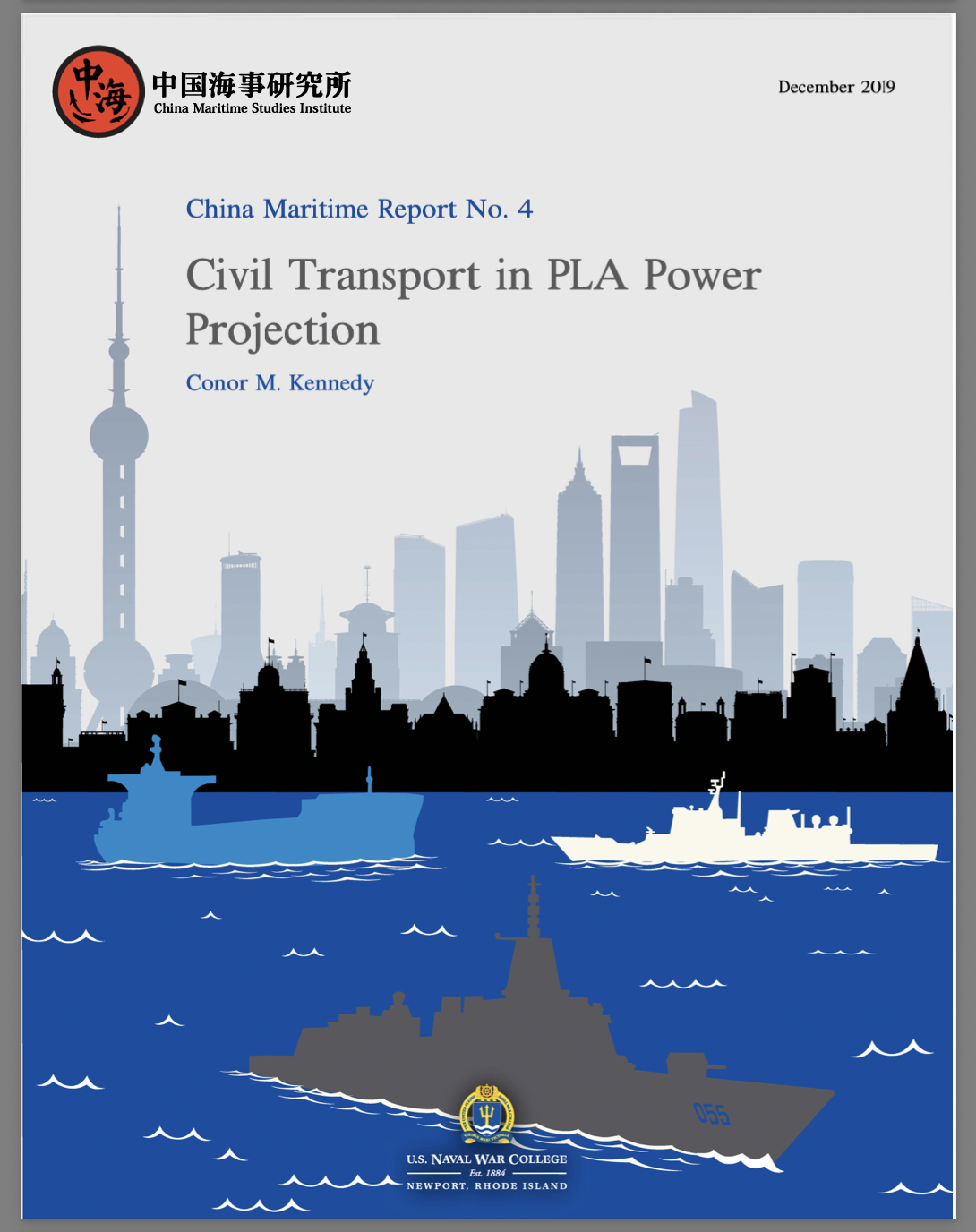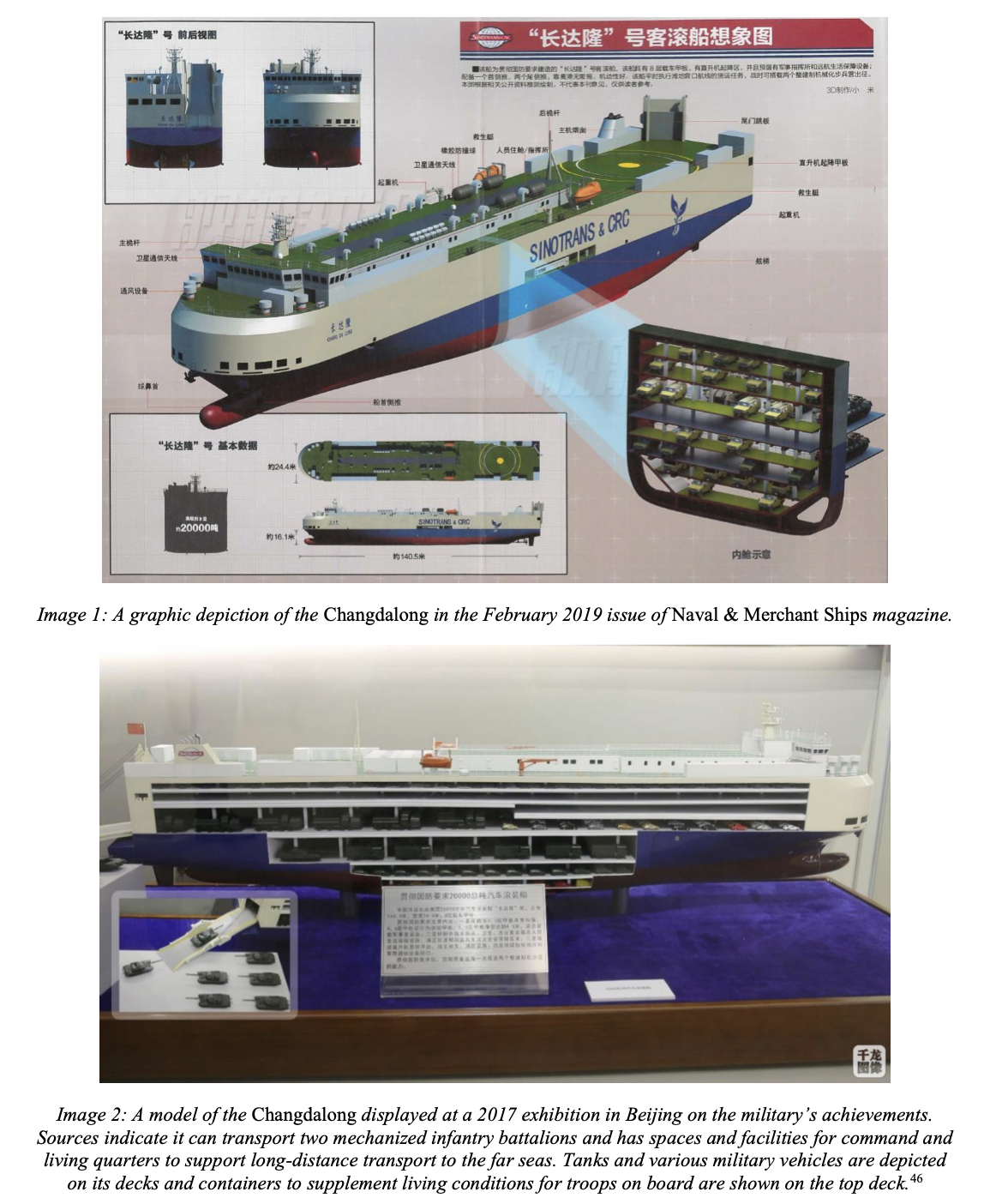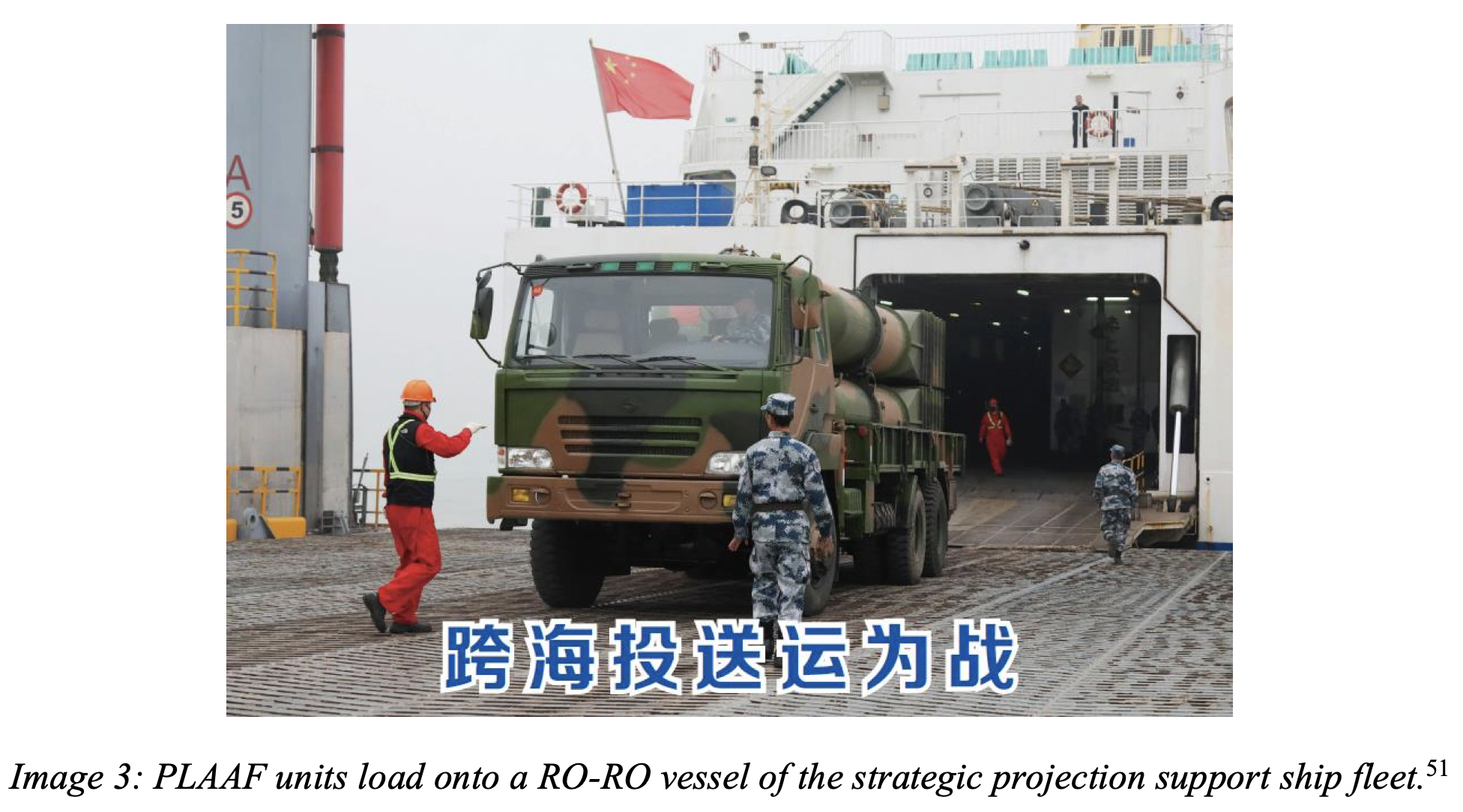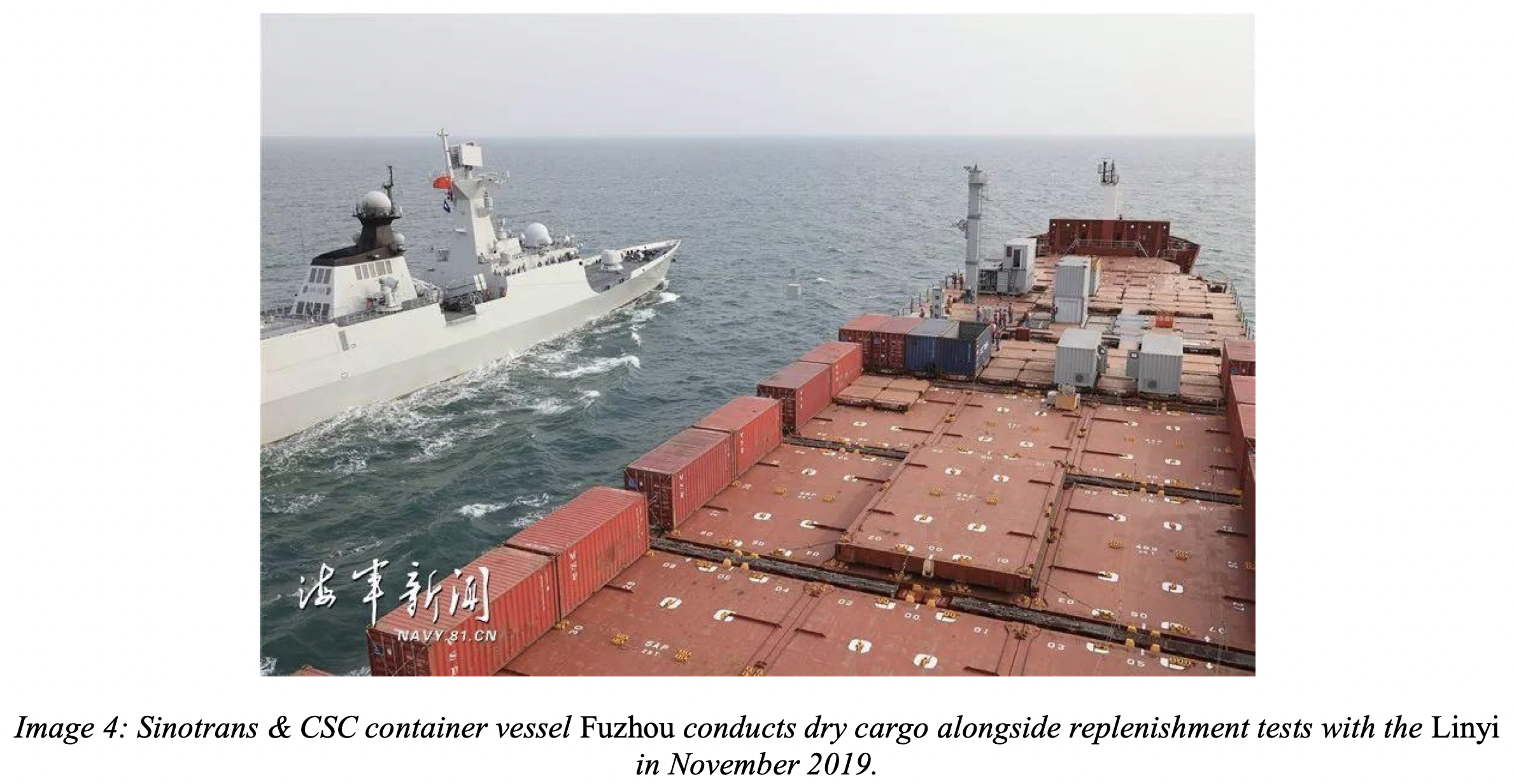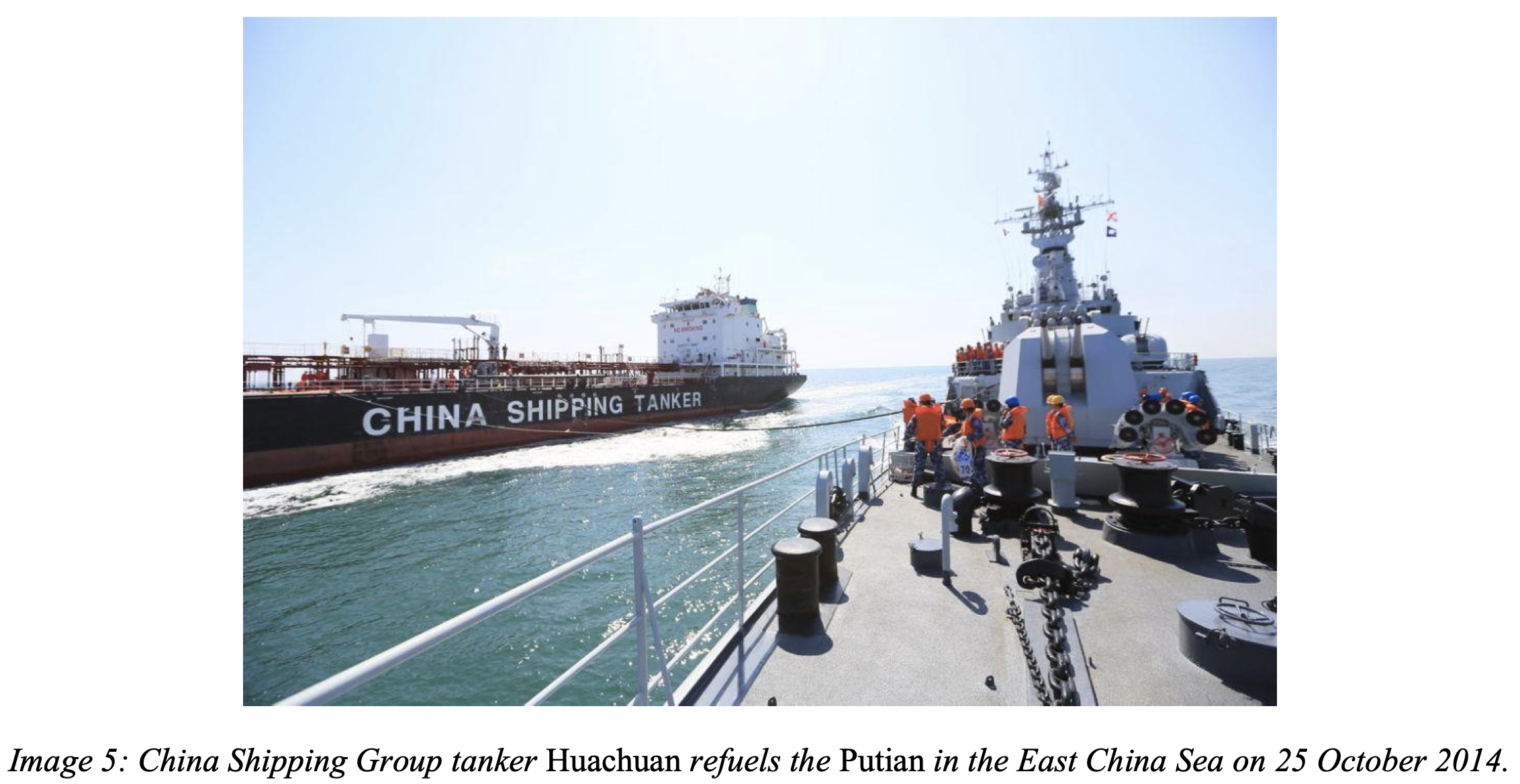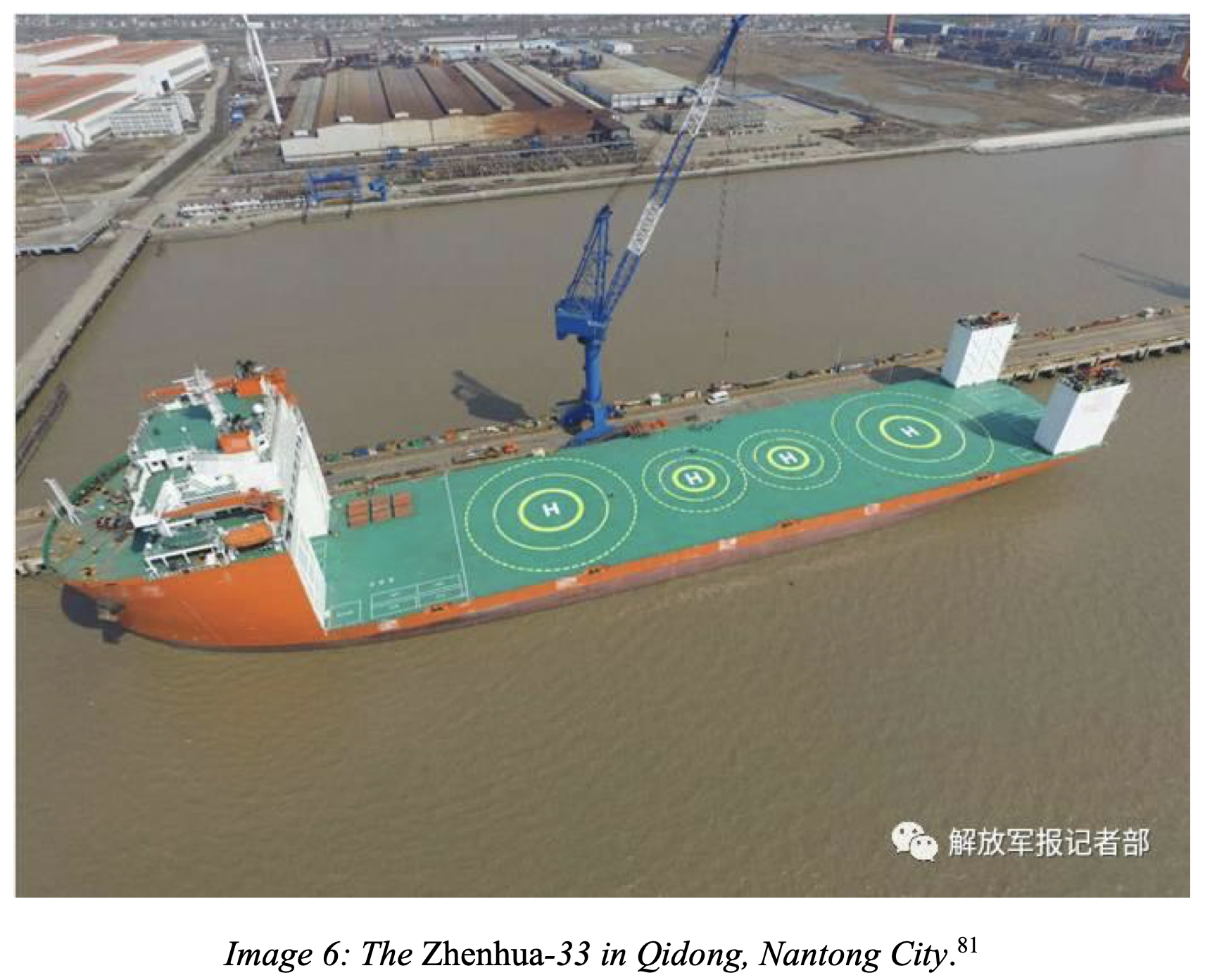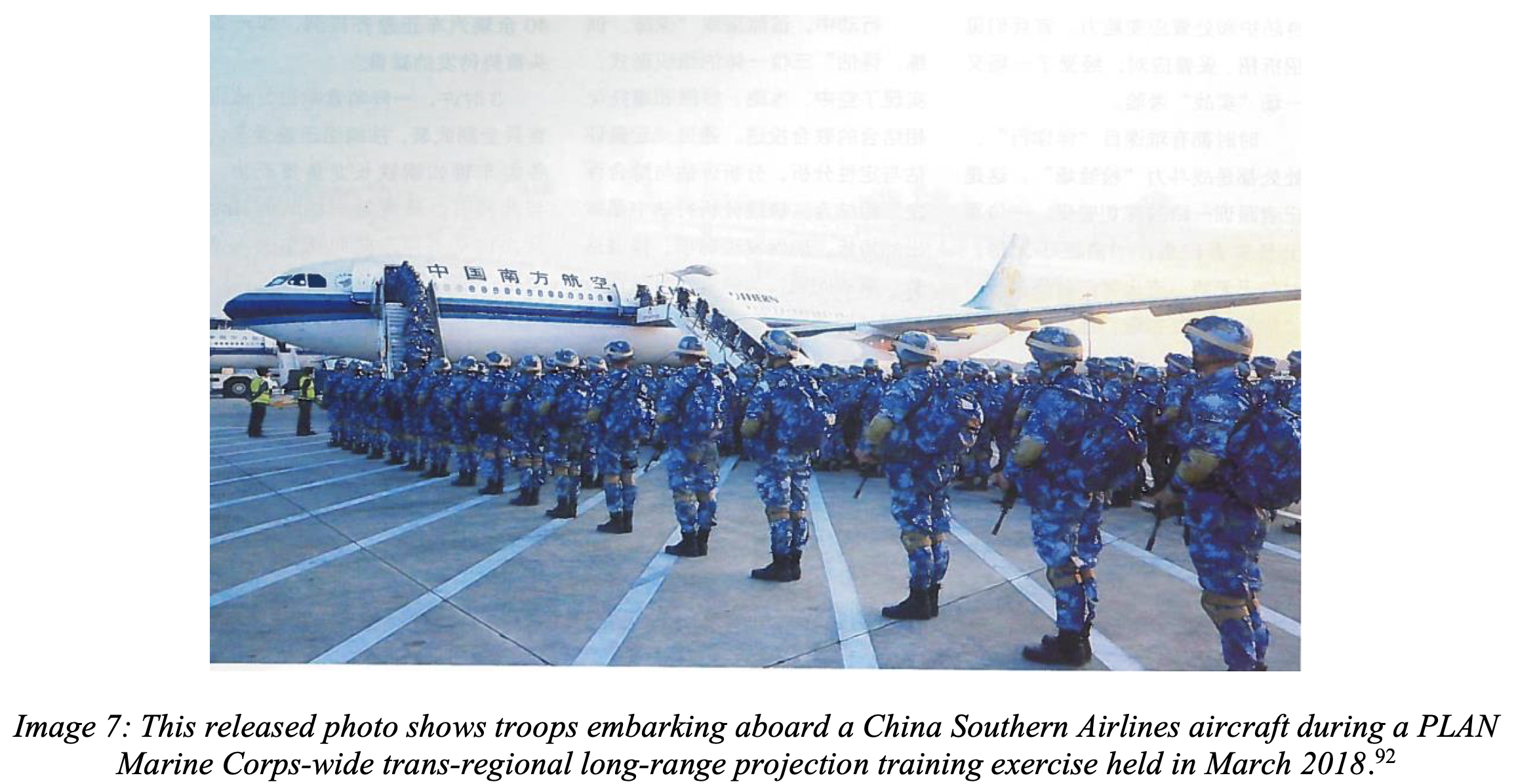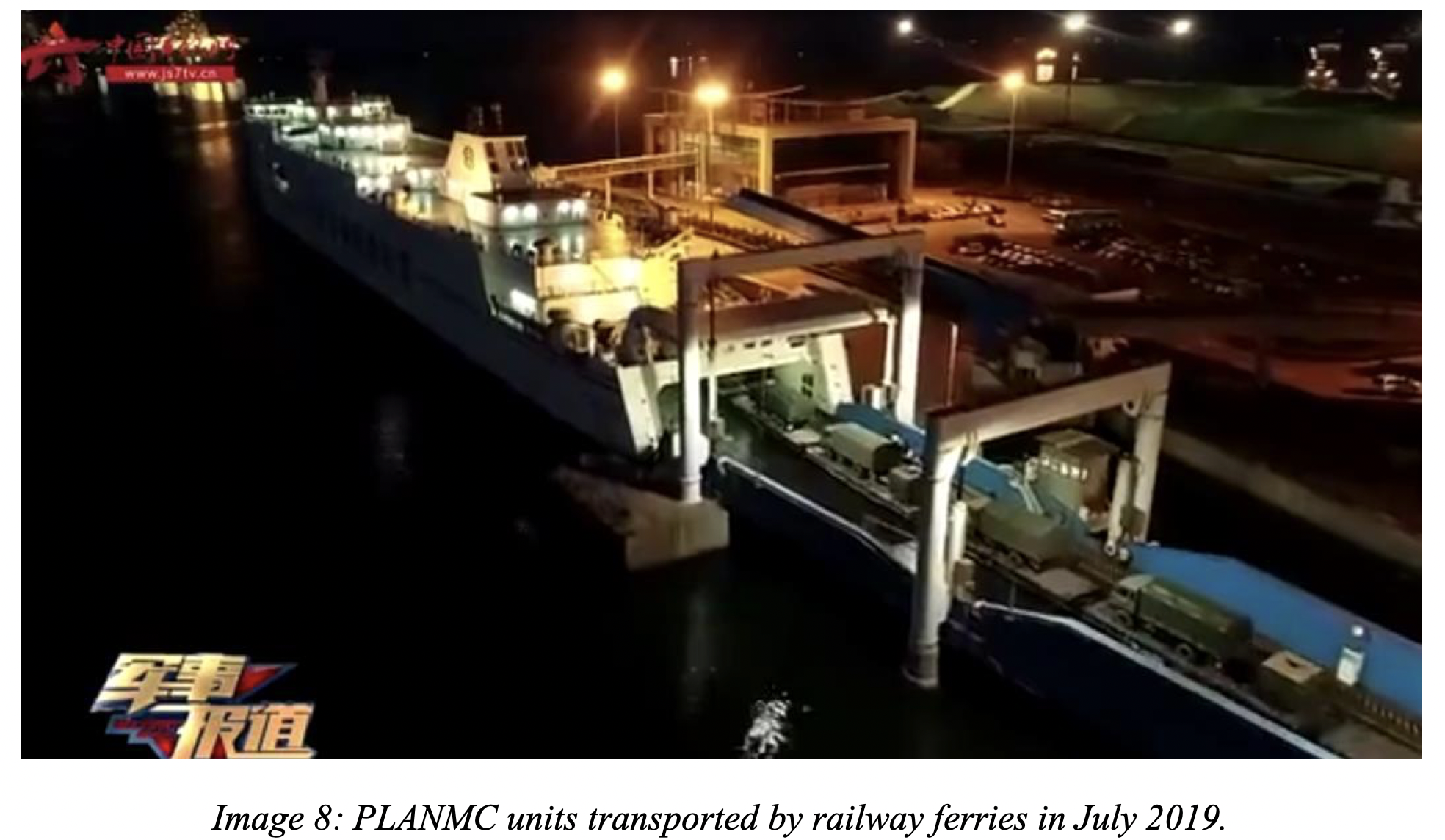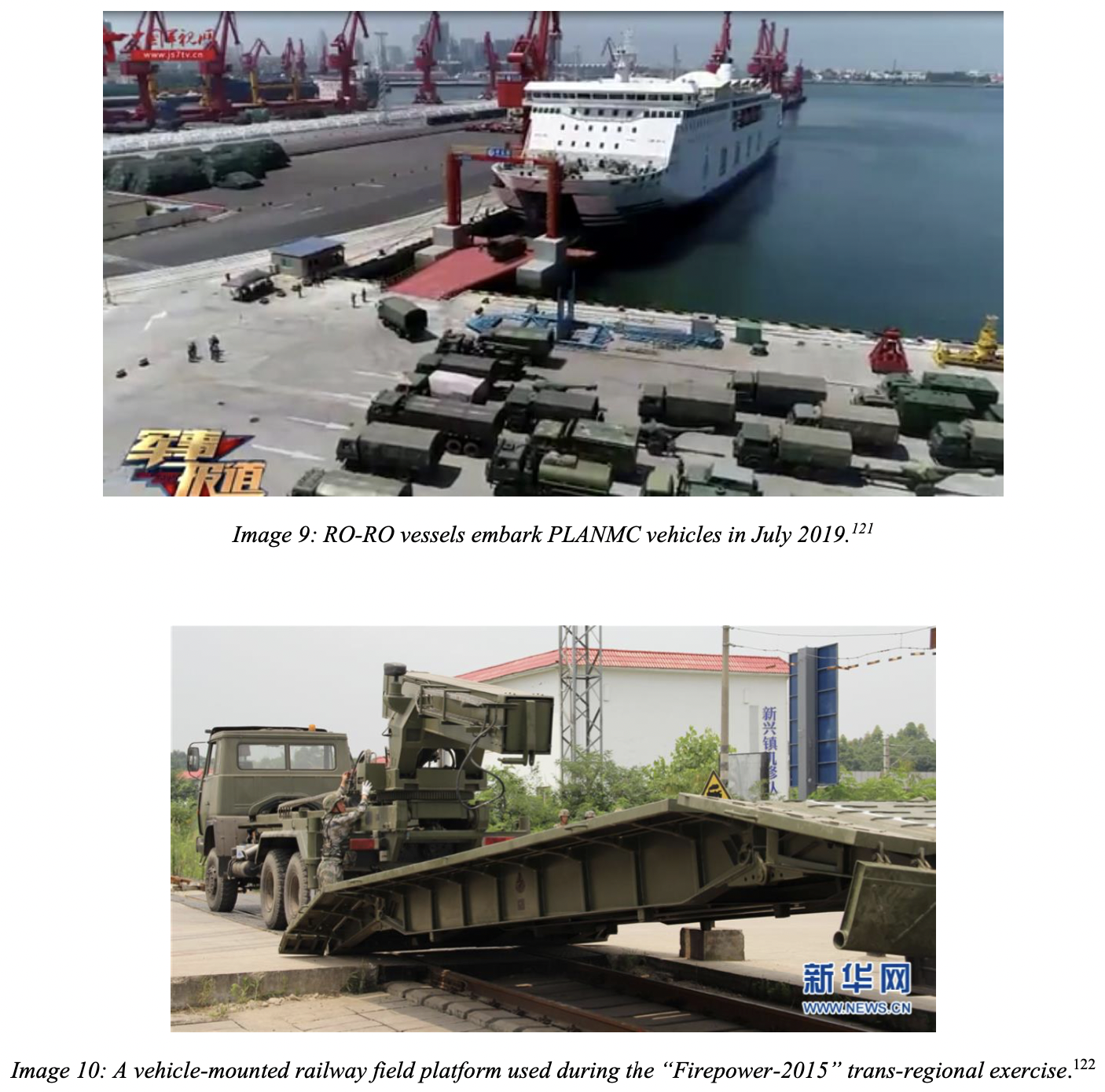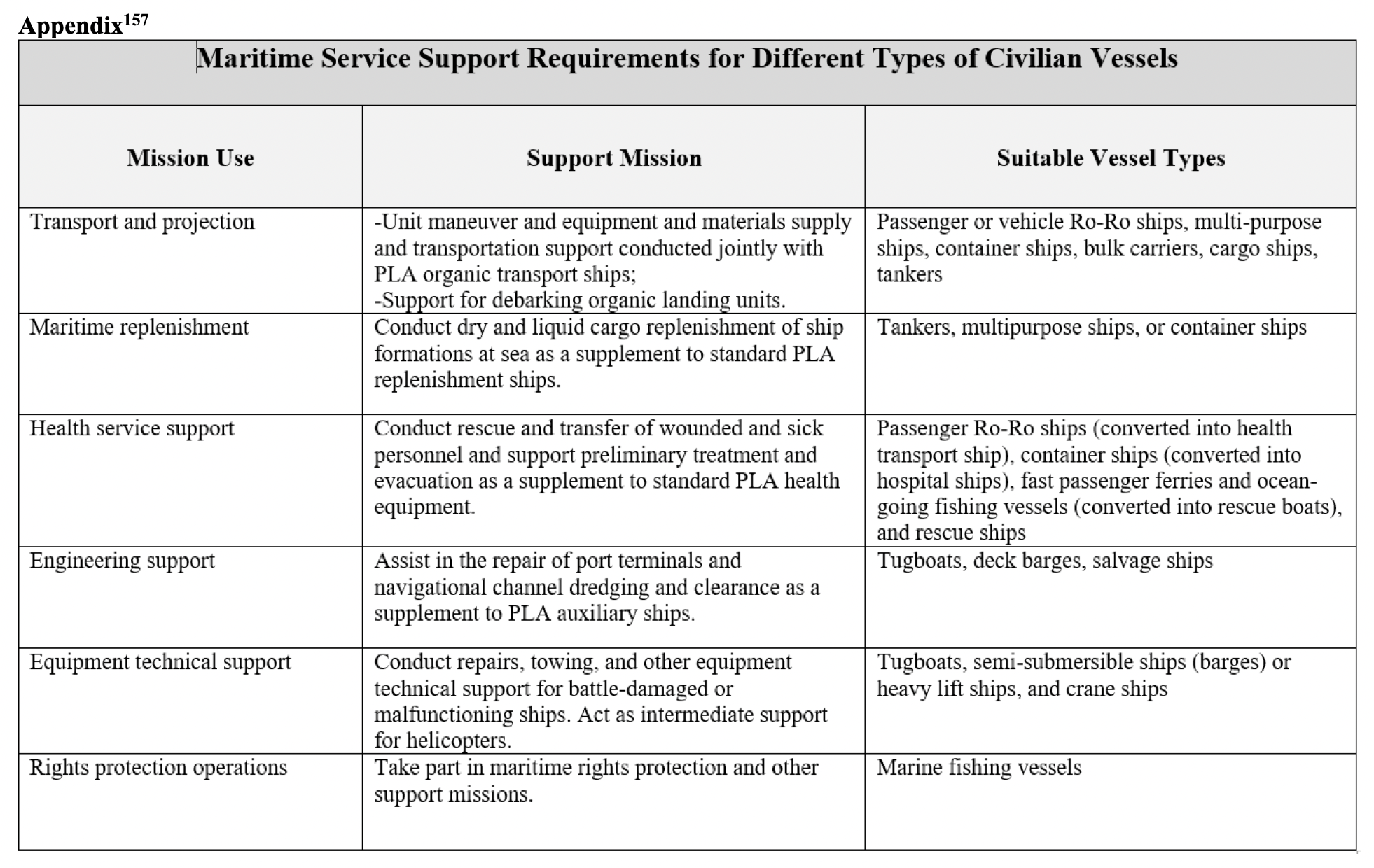CMSI China Maritime Report #4: “Civil Transport in PLA Power Projection”
Conor M. Kennedy, Civil Transport in PLA Power Projection, China Maritime Report 4 (Newport, RI: Naval War College China Maritime Studies Institute, December 2019).
Summary
The People’s Liberation Army (PLA) has ambitious goals for its power projection capabilities. Aside from preparing for the possibility of using force to resolve Beijing’s territorial claims in East Asia, it is also charged with protecting China’s expanding “overseas interests.” These national objectives require the PLA to be able to project significant combat power beyond China’s borders. To meet these needs, the PLA is building organic logistics support capabilities such as large naval auxiliaries and transport aircraft. But it is also turning to civilian enterprises to supply its transportation needs. Since 2012, the PLA has taken major steps to improve its ability to leverage civilian carriers as part of the strategic projection support forces in support of military operations. It has developed strategic projection support ship fleets, comprising civilian-operated roll-on/roll-off, container, tanker, and semi-submersible ships. It has also integrated civilian aviation enterprises into strategic projection support aircraft fleets. To facilitate the staging of military forces for projection beyond China’s borders, the PLA has improved its ability to use China’s modern rail networks and trucking fleet. The PLA has also developed its first strategic projection base, a specialized center of logistics expertise intended to serve PLA power projection requirements through civil-military fusion. To be sure, China’s strategic projection support forces must overcome several challenges before they can fully meet the needs of the PLA. In some cases, training is lax and national defense standards are outdated, or not fully implemented. The PLA itself, which is currently in the midst of a major reform, must also improve its ability to integrate civilian carriers into its combat and support operations. However, the PLA is already taking steps to overcome these challenges, and the PLA logistics community is energetically developing new approaches to better leverage China’s enormous civil transportation sector to meet Beijing’s current and future power projection requirements.
Introduction
The People’s Liberation Army (PLA) has undergone significant transformation over the past several years through reforms enacted by Chairman Xi Jinping. Accompanying major changes in senior leadership, organization, and force structure are growing efforts by the PLA to boost its power projection capabilities. Much analysis of Chinese military development tends to focus on the emblematic platforms of long-range power projection: large warships and military aircraft.1
But the PLA also relies on civilian carriers—ships, airplanes, trains, and trucks—to support its power projection needs. Since the 18th Party Congress (November 2012), the People’s Republic of China (PRC) has taken major steps to improve its ability to leverage civilian carriers to serve the Chinese military. This is an important, but understudied, aspect of China’s military development.
This report seeks to help close this gap in the literature. It examines efforts by the PLA to strengthen what it calls “new-type strategic projection forces.”2 Aside from the PLA’s own organic lift capabilities, this includes civilian transport systems and platforms that could be leveraged in a crisis or conflict. Much of this effort has been aimed at improving the PLA’s ability to project power over water and across long distances—to the frontiers of Chinese-claimed territory in maritime East Asia, and to countries and oceans around the world where Chinese “overseas interests” are concentrated. These developments therefore have huge implications for the U.S. and its allies and partners in this period of growing great power competition.
This report comprises four main parts. Part 1 introduces the PLA concept of strategic projection and the drivers behind the PLA’s recent prioritization of strategic power projection force development. Part 2 outlines the legal and organizational foundations for PLA employment of civilian carriers for military purposes. Part 3—the bulk of the report—describes force development in strategic sea lift, strategic airlift, rail and road projection, and strategic projection bases, focusing heavily on support capabilities derived from civilian carriers. The report concludes with a discussion of challenges the PLA must overcome before it can fully leverage civilian carriers to achieve the power projection capabilities it desires.
China’s Strategic Power Projection Needs
The PLA defines “strategic power projection” (战略投送) as “actions to comprehensively use a variety of transportation forces to insert forces into an area of operations or crisis in order to achieve specific strategic objectives.”3 These transportation forces include organic PLA transportation supporting forces, such as PLA Air Force (PLAAF) Y-20 transport aircraft or the PLA Navy’s (PLAN) Type-071 Landing Platform Dock (LPD) vessels. They also comprise national civilian transportation resources—the focus of this report.
Strategic projection capabilities are vital to the success of any likely military scenario involving China. In East Asia, the PLA must be prepared to project power over water in order to seize and defend disputed islands, including Taiwan. To achieve these aims, the PLA could be asked to fight what it calls an “informatized limited war” (信息化局部战争—sometimes translated as “informatized local war”).4 It must also be prepared for a range of other combat operations along its periphery, including an intervention in North Korea.
But China’s interests are not confined to maritime East Asia. The need to defend China’s expanding “overseas interests” (海外利益) is often cited as a key driver behind efforts to augment the PLA’s ability to project power over long distances.5 China’s overseas interests include the security of Chinese citizens and property in foreign lands and the security of sea lines of communication.6 Indeed, experts in the PLA are increasingly advocating for the improvement of “cross-border, transoceanic long-range projection capabilities” (跨境越洋远程投送能力).7
Power projection capabilities also serve valuable strategic purposes even when they are not used. Demonstrating the ability to project power beyond China’s borders helps influence the strategic calculus of foreign decision makers. It is therefore integral to deterrence, crisis control, and war prevention, and maintenance of the initiative in almost any scenario.8
China’s strategic projection needs are not static. Indeed, they seem to be increasing on the basis of an explicit timeline. This timeline was outlined by the chief of staff of the Central Military Commission’s (CMC) Transport and Projection Bureau Liu Jiasheng in a February 2019 article.9 Liu describes three phases:
- In the short-term, the military must be ready to fight and win an informatized limited war in the maritime direction. To this end, the PLA will focus on greater development of strategic sea and air lift forces. Efforts will include implementing technological advancements in self- loading trucks, fast passenger roll-on/roll-off (RO-RO) ships, large strategic transport aircraft, unmanned platforms, and precision projection systems.
- In the medium-term, the PLA will focus on developing the ability to project power to “countries and regions along the ‘Belt and Road’ and areas crucially related to key interests around the globe.” The focus of the PLA’s preparation for military struggle will be “fighting and winning an overseas informatized limited war or controlling a major crisis.” To this end, the PLA will develop unmanned projection systems on land, sea and air, with significant focus on precision air projection capabilities.
- In the long-term, the PLA will primarily focus on “global projection.” It will rely on China’s overseas bases and air and space multi-dimensional projection systems to meet the rapid reaction requirements of transportation projection capabilities, in the event of a war anywhere around the globe. Future developments will include high-speed cargo rail, high-performance sea and air platforms, hypersonic transport aircraft, coordinated robotics and unmanned systems in automated transportation systems, and intelligent unmanned transport decision- making systems.10
To improve strategic projection capabilities, the PLA is constructing its own strategic lift forces, including heavy lift aircraft, military helicopters, large transport ships, amphibious ships, and replenishment ships.11 The PLA began developing its organic strategic lift capabilities relatively late compared to other great powers. Chinese military leaders believe the PLA has a long way to go before it can meet its strategic projection requirements.
To support strategic projection, the PLA is also striving to enhance civil-military fusion in the nation’s maturing transportation infrastructure. The role of civilian carriers in strategic projection operations has become a major area of development in the military. In large part, this is driven by a desire to compensate for shortcomings in the PLA’s own organic lift capabilities. Civilian transportation carriers organized for military transportation support are considered part of the PLA’s strategic projection support forces (战略投送支援力量). … … …

